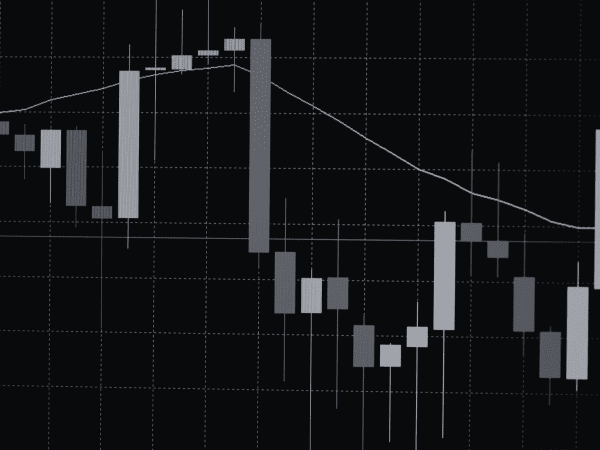Seeing the Full Picture: Reassessing Liquidity in European Equities

By James Baugh, Head of European Market Structure, TD Securities
Liquidity is more dispersed than ever, but has our ability to see and measure it kept pace?
That was a recurring theme at TradeTech Europe 2025, and particularly in my Liquidity and Trade Transparency panel where the discussion highlighted a disconnect between how liquidity is tracked and how it is actually formed. As execution choices expand and market structure evolves, we should be asking: are we still looking in the right places? And are our metrics keeping up with market behaviour?
These are not simple questions, but they are the right ones. Because if we want to support a robust and resilient equity market, we need to understand the forces that are quietly reshaping it.
Looking Beyond the Lit Market
A key part of this conversation is the longstanding habit of treating lit markets as a proxy for all liquidity. While lit venues remain essential for transparency, price discovery, and benchmark formation, they are no longer the full story.
More trading is now taking place in environments that do not feed into traditional visibility metrics which means we need to be more deliberate in how we evaluate liquidity and its impact on execution quality.
Four Areas Requiring Industry Attention
From both internal analysis and client conversations, four areas stand out where greater clarity would support a more accurate and consistent view of the market:
- Changing Role of Lit Markets
The shift away from primary lit venues means they can no longer be relied on as a complete picture of available liquidity. They remain crucial, but they are only part of the equation. - Off-Book on Exchange Volumes
A large share of these trades – around two-thirds – are non–price forming, yet they are still counted in total volume statistics, inflating perceptions of what is truly accessible. - Unreported Internalisation
Principal-to-principal swap activity, often meaningful and potentially price forming, may not be printed at all. That absence creates a gap in how we assess addressable liquidity. - Bilateral and SI Trading Growth
The increase in bilateral execution and systematic internaliser (SI) flow brings welcome immediacy and flexibility, but also reduces visibility in public markets, particularly around the close. This shift has implications for benchmark integrity and investor participation.
These are not criticisms of any specific model. They are structural realities we need to acknowledge if we want to accurately assess market function.
Liquidity Quality and Execution Outcomes
Across the industry, we are seeing changes in the liquidity dynamics which reflects a broader shift in how and where institutional flow is being executed.
Notably this change has been driven by a growth in bilateral trading. Many liquidity providers have effectively addressed legacy issues around reversion and outcome stability. The more important question is what it means when liquidity is taken out of the public markets and how that impacts execution performance and weakens the consistency of price formation.
It is also worth noting that access to bilateral or SI liquidity is not always uniform. The experience can differ between clients, from pricing to workflow, which raises broader questions about consistency and fairness. In a market that depends on confidence and comparability, that disparity is important to understand.
Supporting Transparency and Progress
Initiatives such as MMT trade flags have already helped identify which transactions are price forming. However, use of these tags is still voluntary. Broader adoption would improve consistency and allow all participants to interpret data on more equal terms.
There is also scope for greater alignment around basic definitions – for example, how average daily volume (ADV) is calculated. Inconsistent interpretations of what counts as “addressable” liquidity can result in different views of market depth, even for the same security. A clearer approach to these fundamentals would support more reliable decision-making.
The development of a consolidated tape is another important milestone. While the first version may not deliver everything at once, it lays the groundwork for better visibility and comparability across different types of activity.
Encouraging Choice While Preserving Balance
Bilateral and SI models have an important role. For strategies where immediacy is critical in smaller sized business, these channels offer value. We have seen a rise in tools that help investors make smarter decisions about where and when to route flow, and this flexibility should be encouraged.
That said, increased choice should go hand in hand with increased awareness. As execution shifts away from public venues, we need to understand how this impacts the broader system, from liquidity quality to benchmark robustness and investor trust.
This is not about one model replacing another. It is about ensuring that multiple approaches can coexist in a way that supports a transparent, resilient market.
A More Complete Conversation
The answers here are not binary. This is not a choice between lit and bilateral, or between transparency and opacity. What matters is understanding how these mechanisms interact and what that means for price formation, investor access, and long-term confidence.
For European markets to remain globally attractive, transparency and comparability will be essential. That starts with better tools and clearer standards.
We do not need to overhaul what is working. But we do need to be clearer about what is visible, what is addressable, and how we support resilience across the ecosystem. Ultimately, meaningful progress will depend on the industry’s ability to look beyond vested interests and consider what best supports the market as a whole.
If we can maintain a balance – between innovation and transparency, between choice and consistency – we will have a strong foundation for the next phase of European market development.
Seeing the full picture of liquidity is not just about data, it’s about asking better questions, together.
——————————————-

James Baugh, TD Securities
James joined TD Execution Services in 2021 (formerly Cowen Execution Services, now part of TD Securities) as Head of European Market Structure and has been instrumental in helping to develop its liquidity strategy. Prior to this, he spent five years at Citi as European Head of Market Structure and 11 years at London Stock Exchange, where as Head of Equity Sales he was directly responsible for initiatives like Turquoise Plato Block Discovery. As agraduate of Newcastle University, Baugh began his career as a commodity analyst before spending the next six years at Dow Jones in a variety of roles including the management of their European Power Index business.






